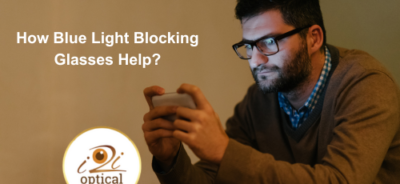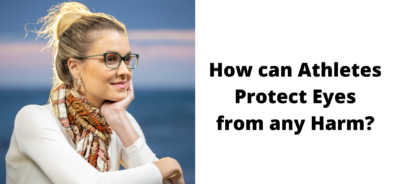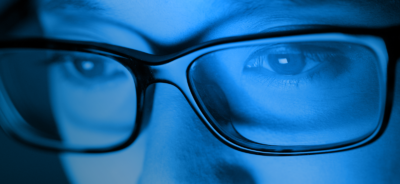Blue Light Filter – Why is it important
Visible light is much more complex than you may think. Stepping outdoor while the sun is out, turning on your computer, constantly texting, mailing, working on the phone because it makes your work faster or simply turning on a digital device, because well you’re not sure what else should you do instead after our life depends on such devices 24*7 — all of these things result in your eyes being exposed to a variety of visible and sometimes invisible light rays that can have a range of adverse effect on your eyes as well as your health.
Most people are aware that sunlight contains visible light rays and invisible ultraviolet rays that can burn or tan the skin. But what many people still don’t know is that the visible light emitted by the sun comprises a range of different-colored light rays that is known to contain different amounts of energy.

What Is Blue Light?
We have already discussed about it in our previous blogs, but again let’s recapitulate.
Sunlight contains red, orange, yellow, green and blue light rays and lots of shades of each of these colors, depending on the energy and wavelength of the individual rays (also called electromagnetic radiation). Combined, this spectrum of colored light rays creates what we usually call “white light” or sunlight.
Let’s make it little easier for you to understand, it is known that there’s an inverse relationship between the wavelength of light rays and the amount of energy they contain. Light rays that have relatively long wavelengths contain less energy, and those with short wavelengths usually have more energy.
So, the rays on the red end of the visible light spectrum have longer wavelengths and, therefore, less energy. Rays on the blue extreme end of the spectrum have shorter wavelengths and more energy. The electromagnetic rays just beyond the red end of the visible light spectrum are called infrared — warming, but invisible. On the other side of the visible light spectrum, blue light rays with the shortest wavelengths and highest energy are sometimes called blue-violet or violet light. This is the reason why the invisible electromagnetic rays just beyond the visible light spectrum are called ultraviolet (UV) radiation.
Scientists say that the visible light spectrum is made up of electromagnetic radiation with wavelengths that spans from 380 nanometers (nm) on the blue end of the spectrum to about 700 nm on the red end. A nanometer is one billionth of a meter — that’s 0.000000001 meter!
So, coming back to blue light, it is generally defined as visible light ranging from 380 to 500 nm. Blue light sometimes is further broken down into blue-violet light which is roughly 380 to 450 nm and blue-turquoise light which is roughly 450 to 500 nm. That’s why blue light filter glasses are becoming more popular nowadays and social media influencers are praising the benefits of opting for blue light blocking glasses from brands like SEIKO Super Resistant Blue.
Blue Light – Learn The Facts
Just like UV rays, visible blue light has both benefits and dangers. Here are important things you should know about blue light and how you can protect yourself from the harms of it.
- Blue Light is Everywhere Around Us
Sunlight is one of the greatest source of blue light, and being outdoors during daytime is where most of us get most of blue light exposure. But apart from such natural blue light exposure, there are also many man-made, indoor sources of blue light, including smartphones, televisions, laptop, computer, fluorescent and LED lighting etc.
The digital display screens of computers, tablets, smartphones and other such digital devices emit significant amount of blue light. The amount of HEV light these devices emit is only a fraction of that emitted by the sun. But people tend to spend most of their time using these devices and the proximity of these screens to the user’s face and prolonged stare to that display have alarmed many eye doctors and other health care professionals and made them concerned about possible long-term effects of blue light on eye health and other such ailments.
- Your Eye is Not Perfectly Designed To Block Blue Light Exposure
Anterior structures of adult human eye, the cornea and lens are very effective at blocking UV rays from reaching the light-sensitive retina at the back of the eyeball. Interestingly, less than one percent of UV radiation from the sun reaches the retina, even if you aren’t wearing sunglasses. That’s actually awesome!
But, virtually all visible blue light passes through the cornea and lens and reaches the retina. Not a good news for you! But let us assure you, your eyes have the perfect friend it needs, SEIKO Super Resistant Blue light filter glasses. Known to protect your eyes from blue light giving you more relaxed vision and thus preventing tired eyes as there is less glare due to a reduction of blue diffused light.
- Blue Light Makes The Sky Look Blue
The short-wavelength, high-energy light rays on the blue end of the visible light spectrum is known to scatter more easily than other visible light rays when they strike air and water molecules in the atmosphere. The higher degree of scattering of these rays is what gives a cloudless sky its blue look.
- Blue Light Exposure Increases The Risk Of Macular Degeneration
The harsh fact that blue light penetrates the retina is a matter of concern. Laboratory studies have shown that too much exposure to blue light damages light-sensitive cells in the retina. Which causes changes that is similar to that of macular degeneration, which in turn can lead to permanent vision loss.
Although extensive research is being conducted to determine how much natural and man-made blue light is “too much blue light” for the retina, and there are still debate going on whether blue light is actually harmful for your eyes or not. Many eye care providers are concerned that the added blue light exposure from digital devices that we use daily may increase a person’s risk of macular degeneration later in their life.
- Blue Light is Known To Contribute To Digital Eye Strain
Smartphone, laptop screen, television and other digital devices that emit significant amounts of blue light, a constant exposure of the eyes, this unfocused visual “noise” reduces contrast and contribute to digital eye strain in the long run. (don’t forget to blink and wash your eyes if there’s any discomfort)
Research has shown that lenses like SEIKO Super Resistant Blue that block blue light with wavelengths less than 450 nm (blue-violet light) increase contrast significantly. Therefore, brands like SEIKO Super Resistant Blue computer glasses may increase comfort of your eyes when you’re viewing digital devices for extended periods of time retaining the same crystal-clear screen quality and color at all times.
- Blue light protection – Important After Cataract Surgery
The lens in an adult human eye is known to block nearly 100 percent of the Sun’s UV rays. As part of the normal aging process, the eye’s natural lens eventually blocks some short-wavelength blue light as well (the type of blue light that cause damage to the retina and lead to macular degeneration and vision loss.) If you have cataracts and are about to have cataract surgery, you must ask your surgeon what type of intraocular lens (IOL) will be used to replace your natural cloudy lens, and how much blue light protection the IOL will provide. After the cataract surgery you may benefit from eyeglasses like SEIKO Super Resistant Blue that have lenses with a special blue light filter and protect your eyes from blue light.
So, where to find the perfect pair of blue light filter glasses in Mauritius? We will actually take our name, i2i Optical the best optical store in Mauritius with thousands of happy clients! We believe eye care should be the first and foremost thing for everyone and we are proud to provide you the best eye care solution in Mauritius, with world class eye wear brands and certified ophthalmologist here to gift you a crystal clear vision. We are delighted to showcase the best blue light filter glasses from world renowned brand SEIKO Super Resistant Blue in our showroom which now awaits your visit.










